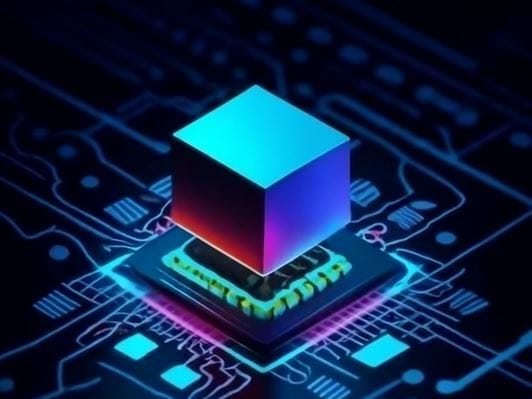- The CyberLens Newsletter
- Posts
- Quantum Ready: The Rise of Rare AI-Driven Post-Quantum Cybersecurity Frameworks
Quantum Ready: The Rise of Rare AI-Driven Post-Quantum Cybersecurity Frameworks
Exploring Two Little-Known but Game-Changing Post-Quantum Development Frameworks Poised to Fortify the Future of Cybersecurity
Modernize your marketing with AdQuick
AdQuick unlocks the benefits of Out Of Home (OOH) advertising in a way no one else has. Approaching the problem with eyes to performance, created for marketers with the engineering excellence you’ve come to expect for the internet.
Marketers agree OOH is one of the best ways for building brand awareness, reaching new customers, and reinforcing your brand message. It’s just been difficult to scale. But with AdQuick, you can easily plan, deploy and measure campaigns just as easily as digital ads, making them a no-brainer to add to your team’s toolbox.
Interesting Tech Fact:
One rare and little-known fact about post-quantum cybersecurity is the emerging use of quantum noise-based cryptography, which harnesses the inherent randomness of quantum fluctuations—also known as vacuum noise—to generate truly uncrackable encryption keys. Unlike traditional algorithms or even most post-quantum cryptographic candidates, this approach doesn't rely on hard mathematical problems but instead on unpredictable quantum behavior that even quantum computers can’t replicate. This method, pioneered by niche research labs in Japan and Austria, is being tested in high-security applications like satellite communications and quantum key distribution (QKD) networks—offering a promising path to future-proof encryption beyond classical assumptions.
Introduction
As quantum computing moves from theoretical possibility to tangible reality, the global cybersecurity landscape is experiencing a seismic shift. Classical encryption methods—cornerstones of today's secure digital infrastructure—are becoming increasingly vulnerable to quantum attacks. In response, the race toward quantum-resilient solutions is not just accelerating, it’s evolving.
What many professionals overlook, however, is that amidst the mainstream focus on algorithms like CRYSTALS-Kyber and Falcon, a quiet revolution is taking place. Rare but highly effective post-quantum development frameworks, coupled with AI-enhanced cybersecurity systems, are being engineered by forward-thinking researchers and startups. These lesser-known technologies are not just experimental—they are operational, battle-tested in niche sectors, and ready to scale.
Here, we are uncovering two of the most advanced and under-the-radar post-quantum development frameworks that leverage AI to deliver unprecedented defense mechanisms. These frameworks—QARMA-PQ and SpectralGuard-AI—are demonstrating how AI, when fused with quantum-secure architecture, can unlock cybersecurity resilience at levels the industry has yet to fully embrace.

1. The Urgency of Post-Quantum Cybersecurity
The urgency to adopt post-quantum cryptographic measures is no longer speculative. With advancements in quantum processing units (QPUs) from firms like IBM, Google, and China’s Baidu, it’s only a matter of time before quantum capabilities outpace traditional encryption systems. Known vulnerabilities such as Shor’s algorithm threaten to break RSA and ECC, making public key infrastructures (PKIs) potentially obsolete within the next decade.
Despite NIST’s Post-Quantum Cryptography Standardization Project making strides with candidates like Kyber and Dilithium, many of these solutions are still in transition phases. Enterprises and governments alike need more than cryptographic primitives—they need holistic frameworks built to develop, deploy, and maintain quantum-secure applications, infused with AI-driven adaptability.
This is where frameworks like QARMA-PQ and SpectralGuard-AI come into play.

2. QARMA-PQ: Quantum Adaptive Risk Mitigation Architecture
Overview:
QARMA-PQ (Quantum Adaptive Risk Mitigation Architecture for Post-Quantum Applications) is an obscure yet powerful modular framework developed by a small group of European quantum researchers working with defense tech alliances. It’s designed to help developers create end-to-end post-quantum secure software systems while integrating predictive AI-based threat modeling.
Key Features:
Hybrid Cryptographic Environment: QARMA-PQ supports both quantum-safe algorithms and transitional legacy cryptography, ensuring compatibility while future-proofing systems.
AI-Driven Threat Adaptation: Its embedded machine learning module continuously evaluates threat intelligence feeds, adapting encryption strength and protocols dynamically.
Quantum-Aware Key Lifecycle Management: It introduces advanced key generation and rotation protocols based on entropy variance detection and quantum-safe channels.
Post-Quantum Penetration Simulation: Integrated quantum threat simulation engines allow red teams to emulate potential attack vectors from quantum adversaries.
Strategic Advantage:
QARMA-PQ goes beyond code libraries. It acts as a living development environment that reshapes its security posture based on both classical and emerging post-quantum threat vectors. For critical infrastructure developers in finance, defense, or health, this offers layered protection and intelligence that static frameworks cannot provide.
Current Deployments:
Although not yet open-sourced, QARMA-PQ has reportedly been implemented in several secure communication platforms across the European Space Agency (ESA) and select NATO cyber defense units.
3. SpectralGuard-AI: AI-Infused Post-Quantum Anomaly Detection Framework
Overview:
SpectralGuard-AI is a revolutionary framework born from the intersection of quantum-safe network security and AI-powered anomaly detection. Developed quietly within a research initiative spun off from MITRE Labs, this platform offers a blueprint for next-generation SOCs (Security Operations Centers) in the post-quantum era.
Key Features:
AI-Backed Quantum-Resilient Packet Inspection: Uses spectral analysis paired with AI classifiers to detect even subtle anomalies in encrypted quantum-safe communication protocols.
Neural Cryptanalysis Resistance: Its architecture is designed to resist adversarial AI-based cryptanalysis, which could otherwise manipulate pattern recognition in post-quantum encryption methods.
Post-Quantum Federated Learning: Leveraging edge-based federated learning models ensures that AI continues learning without exposing sensitive training data—an essential requirement in zero-trust and PQ environments.
Quantum Packet Cloaking: SpectralGuard-AI supports cloaking techniques to obfuscate data packets from both classical and quantum state snoopers.
Strategic Advantage:
Unlike many AI-based cybersecurity platforms that bolt AI onto traditional frameworks, SpectralGuard-AI is fundamentally designed with quantum considerations at its core. Its synergy of AI learning with quantum-aware analytics creates an agile defense mesh that thrives on scale, speed, and stealth.
Current Deployments:
Still in stealth mode, SpectralGuard-AI has found early adoption in national research networks and is currently being evaluated for critical infrastructure protection in major Asian tech hubs.

4. Why These Frameworks Matter
What sets QARMA-PQ and SpectralGuard-AI apart isn’t just their sophistication—it’s their anticipatory architecture. Most organizations are still focused on reactive cybersecurity. These frameworks, however, enable predictive and adaptive security that proactively evolves in parallel with both classical and quantum threat landscapes.
Furthermore, both platforms challenge the industry to think beyond static key exchange or hardened endpoints. They introduce a paradigm where AI acts not merely as a supplement, but as a core orchestrator of quantum-resistant security.
5. Strategic Implications for CISOs, Governments, and Enterprises
The post-quantum shift is no longer just a topic for cryptographers and quantum physicists—it’s an executive imperative. Chief Information Security Officers (CISOs) must begin implementing pilot initiatives with post-quantum AI frameworks now, not five years from now.
Adoption of frameworks like QARMA-PQ and SpectralGuard-AI can provide:
Future-Ready Compliance: As regulatory bodies like the EU Cyber Resilience Act and U.S. National Cybersecurity Strategy emphasize quantum-readiness, these tools put organizations ahead of the curve.
Reduced Long-Term Risk Exposure: Early adoption leads to smoother transitions, lower costs, and fewer vulnerabilities once quantum decryption becomes a viable threat.
AI Augmentation Across the Stack: Both frameworks demonstrate how AI can enhance not just detection but also mitigation, encryption, orchestration, and auditability in a secure development lifecycle.

Final Thoughts: Building Cybersecurity That Thinks Ahead
The evolution of cybersecurity in the quantum era will not be defined by just stronger algorithms—it will be defined by smarter architectures. QARMA-PQ and SpectralGuard-AI are early examples of this new breed: frameworks that marry the predictive power of AI with the quantum-imperviousness we desperately need.
As cybersecurity professionals, developers, and policy makers, we cannot afford to merely react to quantum threats once they arrive. We must begin investing in and scaling intelligent, AI-augmented, post-quantum frameworks—especially those that may not yet be mainstream, but whose strategic value is unmatched.

CyberLens will continue to spotlight these emerging advancements to ensure our subscribers remain not only informed, but prepared for the post-quantum cyber frontier.




